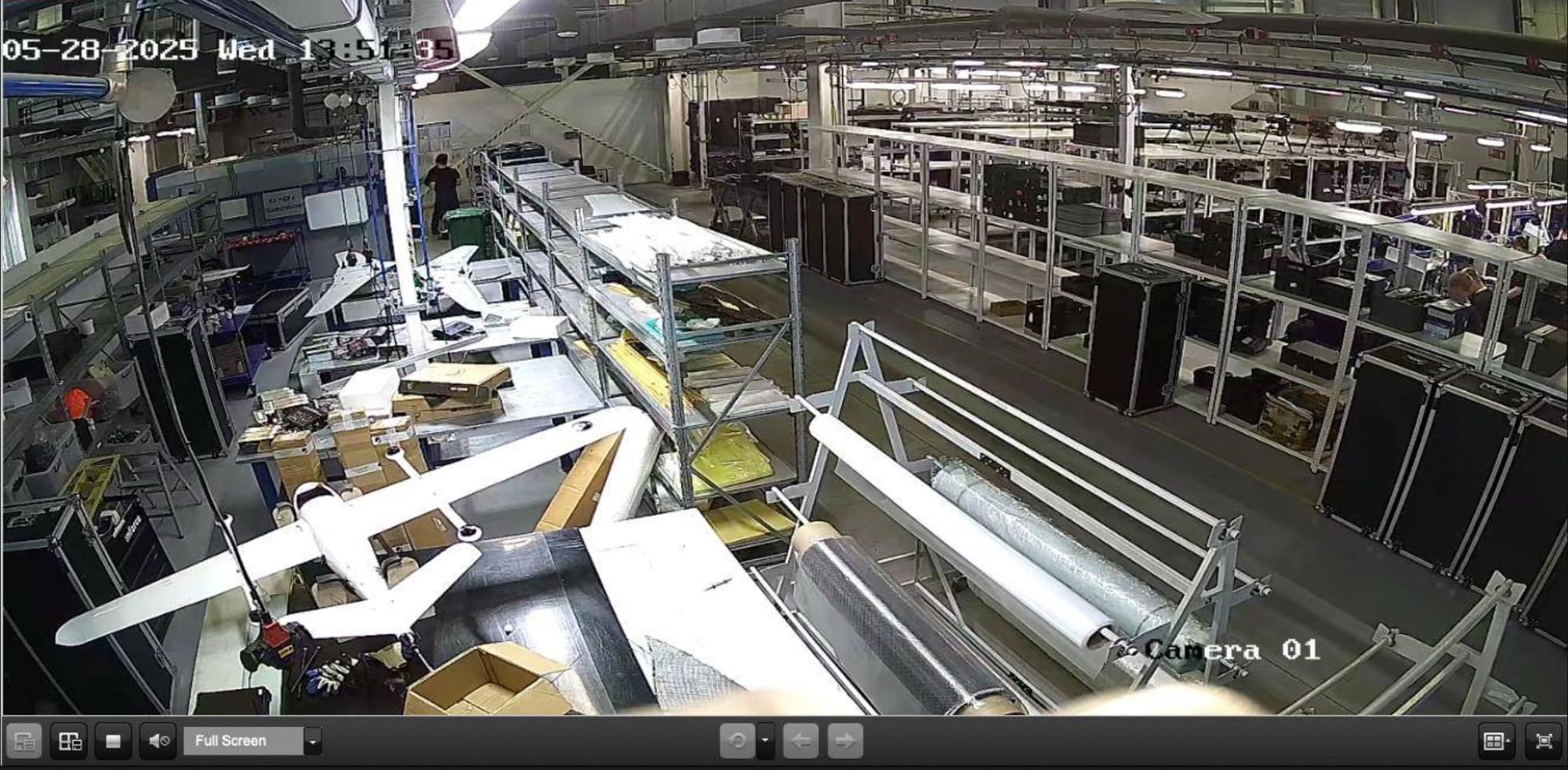Ukrainian Hackers Target Russia’s Gaskar Group in Major Cyber Offensive
In a significant display of cyber warfare and espionage, Ukrainian hackers, supported by national intelligence services, have reportedly executed a pivotal digital assault on the Russian drone manufacturer Gaskar Group. This operation marks a crucial event in the escalating cyber front of the Russia-Ukraine war, highlighting not only the strategic value of drones but also the vulnerability of Russia’s secured defense suppliers to covert digital attacks.
Understanding Gaskar Group
Gaskar Group, based in Moscow, plays a vital role in the proliferation of Russian drones, directly supplying UAVs (unmanned aerial vehicles) to the Russian military. Its importance is amplified through alleged connections to high-ranking Russian officials, including Deputy Prime Minister Marat Khusnullin.
Gaskar Integration, a key subsidiary, specializes in researching, developing, and producing advanced UAV technologies, aligning with Russia’s strategy to optimize battlefield effectiveness using drones—a significant factor in the modern conflict witnessed on Ukrainian frontlines.
Details of the Cyberattack: Operation Breakdown
From July 15 to 16, 2025, hackers from the Ukrainian ‘BO Team,’ the ‘Ukrainian Cyber Alliance,’ and military intelligence units orchestrated a sophisticated electronic offensive with main goals being:
- Infiltrating the company’s networks and servers.
- Acquiring sensitive information and technical documentation on both current and future drone models.
- Disabling the digital infrastructure to halt company operations.
The attack’s effectiveness was remarkable:
- Over 250 systems destroyed, including 46 virtual servers and more than 200 workstations.
- 47 terabytes of technical and corporate data seized and erased, in addition to 10 terabytes of backups.
- Employee data, including personal addresses and family information, was compromised, sending a stark warning to other Russian defense workers.
A Gaskar employee reportedly commented on social media, “All the information was killed, there is nothing to restore.”
Physical impacts within the factory further accentuated the digital chaos: with electronic locks disabled remotely, employees had to evacuate using emergency exits—a scenario befitting a cyber-thriller but painfully real for the company.
Strategic Impact: Why Gaskar Group?
Drones have become the equivalent of tanks and artillery in this war—a critical tool for surveillance, precision strikes, and asymmetric operations. Both Ukraine and Russia are in a race to innovate and mass-produce UAVs, with Russia deploying numerous drones nightly against Ukrainian targets.
By targeting Gaskar, Ukrainian forces achieved the following:
- Paralyzing a major Russian drone supplier: The attack stalled Gaskar’s operations, stopped production, disabled software, and severed internet connections.
- Acquisition of technical secrets: Comprehensive technical designs and confidential documents, now with Ukraine’s defense teams, could enable counter-strategies or reverse engineering.
- Psychological warfare: The theft of personal data and the exposure of vulnerabilities at key defense contractors sows fear among employees and the broader Russian defense sector.
Cyberwar expert Chris Kubecka indicated: This wasn’t just about stealing blueprints. It was about ensuring those blueprints can’t be used and signaling to observers that supply chains can be targeted at their origins.
A Collaborative Approach: Hacktivism in Modern Warfare
The Gaskar incursion highlighted the collaboration between state intelligence and volunteer hackers. Groups such as the Ukrainian Cyber Alliance and ‘BO Team’ blend grassroots cyber expertise with formal military goals. This digital guerrilla methodology amplifies reach and unpredictability, signifying a transformation from defensive measures to proactive, asymmetric, and digitally inherent attacks.
The Outcomes: Losses and Gains
- Operational standstill: Gaskar was left isolated—turning its production and development into a void. Without online access, accounting, and engineering systems, drone manufacturing and shipments are stalled.
- Theft of intellectual property: Ukraine reportedly acquired all critical technical documentation—a treasure trove for both defensive and offensive purposes.
- A wake-up call for security: Russia’s defense sector now confronts the reality that even its most shielded entities are susceptible to advanced threats.
Cyberwar Context: The Emerging Digital “Arms Race”
This attack isn’t an anomaly. In June 2025, Ukrainian cyber operatives also disrupted Russian Railways and top Siberian telecom providers, causing temporary outages.
Simultaneously, Russia persists in its relentless cyberoffensive against Ukrainian governmental structures, critical infrastructure, and enterprises—intending to disrupt communications to the power grid and beyond.
The breach at Gaskar signifies not only a tactical success but also the advent of new warfare dimensions: supply chain cyberattacks where dismantling data and trust at the core could have prolonged impacts beyond physical weaponry.
Expert Views and Industrial Analysis
Experts perceive the Gaskar attack as:
- Proof-of-concept for drone wars: Manufacturing schematics, production rhythms, and other intellectual properties are now key military targets.
- A setback for Russian drone supplies: Despite increased production efforts (over 18,000 drones in 2025), sustained digital disruptions could gravely impact Russia’s deployment capabilities.
- Global cybersecurity vigilance: NATO and defense circles worldwide closely analyze the breach, all reliant on secure supply lines for their unmanned assets.
Anticipated Responses and Future Directions
Russian reaction: As of July, Gaskar Group has not publicly addressed the claims, and its website stays active, although internal disorder has been widely reported.
Boost to Ukrainian morale: This operation illustrates Ukraine’s determination and digital competency, enhancing confidence among allies and partners.
Security alert for defense sectors: The personal data breach highlights risks that extend beyond corporate systems to individual team members and their families—sending a chilling warning to those supporting military logistics.
Social Dynamics and Cultural Perspectives
The aerial contest, reminiscent of Hollywood blockbusters like “Stealth” or the “Call of Duty” series, now unfolds across ground and digital realms. The scenario conjures images of John Connor from The Terminator revitalized as a Ukrainian coder.
Social media buzzed with jokes and memes from both sides, with Ukrainians framing the operation as the “Ctrl+Alt+Delete” for Russian drone aspirations, while Russian staff humorously searched for their lost files online.
Behind the digital breach are real individuals—engineers locked out of their systems, families concerned about privacy violations, and young tech talents in Kyiv collaborating with military strategists through platforms like Slack and encrypted chat. This mix of technical skill, nationalism, and necessity is notably human—painful for some, motivating for others.
Concluding Insights for Drone, Cybersecurity, and Defense Industries
- Strategic role: Drones have become crucial in modern asymmetric warfare, and disrupting supply chains through cyber means holds strategic importance akin to a missile launch.
- Data as a weapon: Blueprints, source codes, and employee information are the currency of this 21st-century warfare, often surpassing the value of physical assets.
- Cyber collaborations expand potential: The integration of volunteers and national defense fuels the scale and unpredictability of contemporary cyber warfare.
- Expect continued operations: With each successful hack, the motivations for further initiatives increase—for Ukraine, Russia, and other actors observing the future of unmanned combat.
As both virtual and physical dust settles, the Gaskar incident serves as a case study on how future conflicts may unfold—not only with drones dominating the skies but through cyber offensives on digital fronts. Indeed, the skies are no longer the limit—they are just the beginning.













